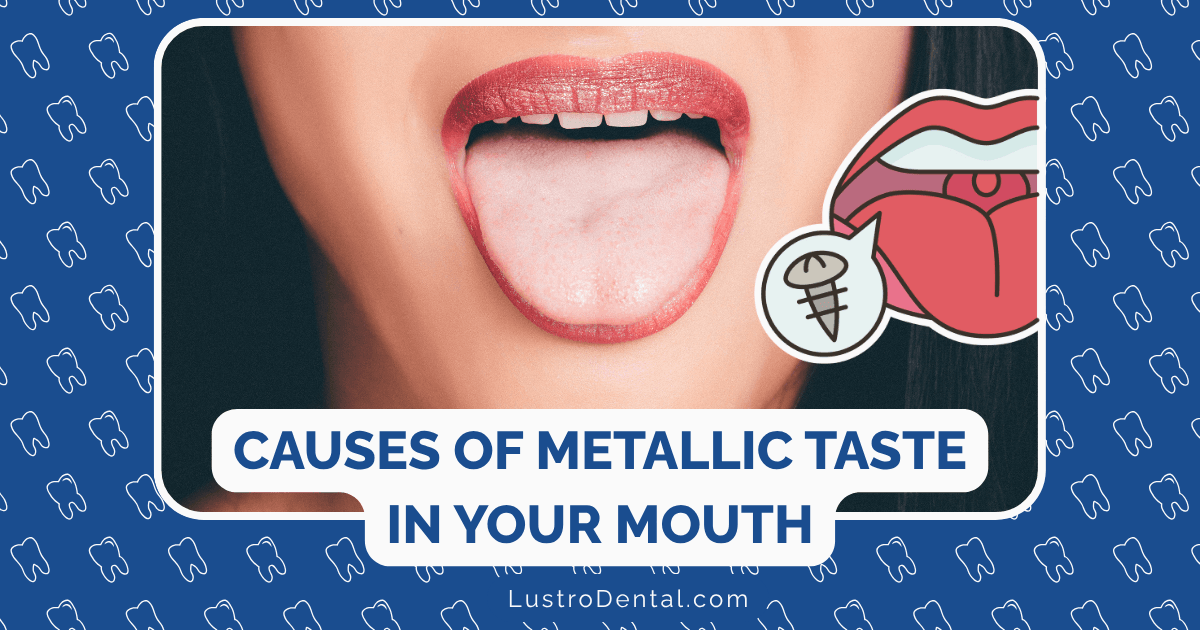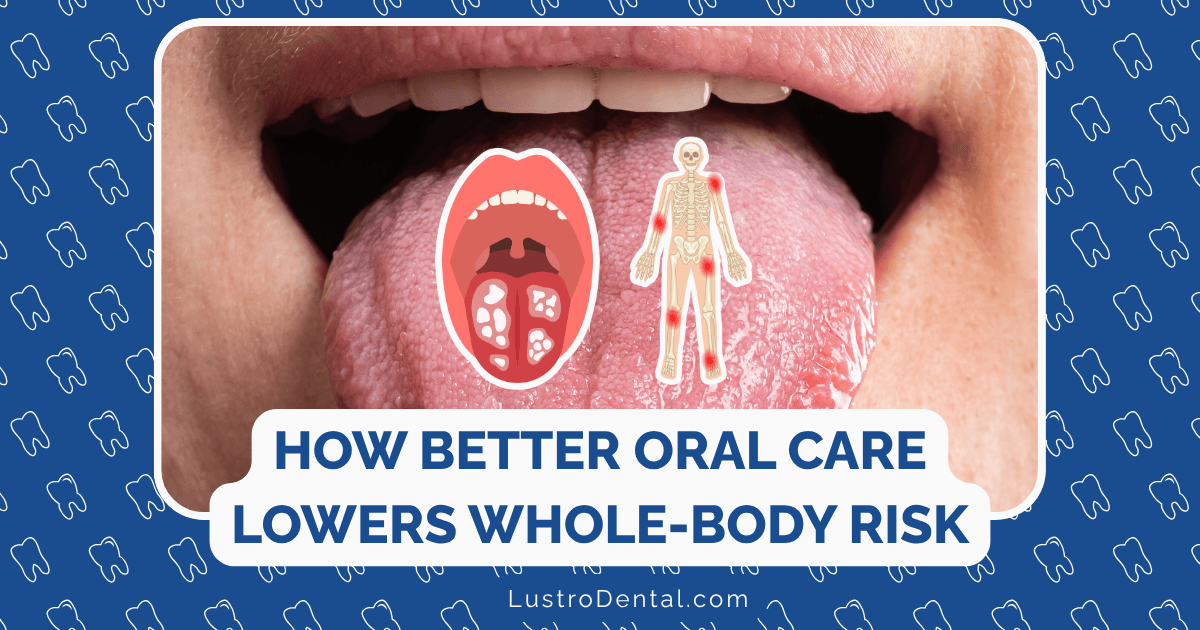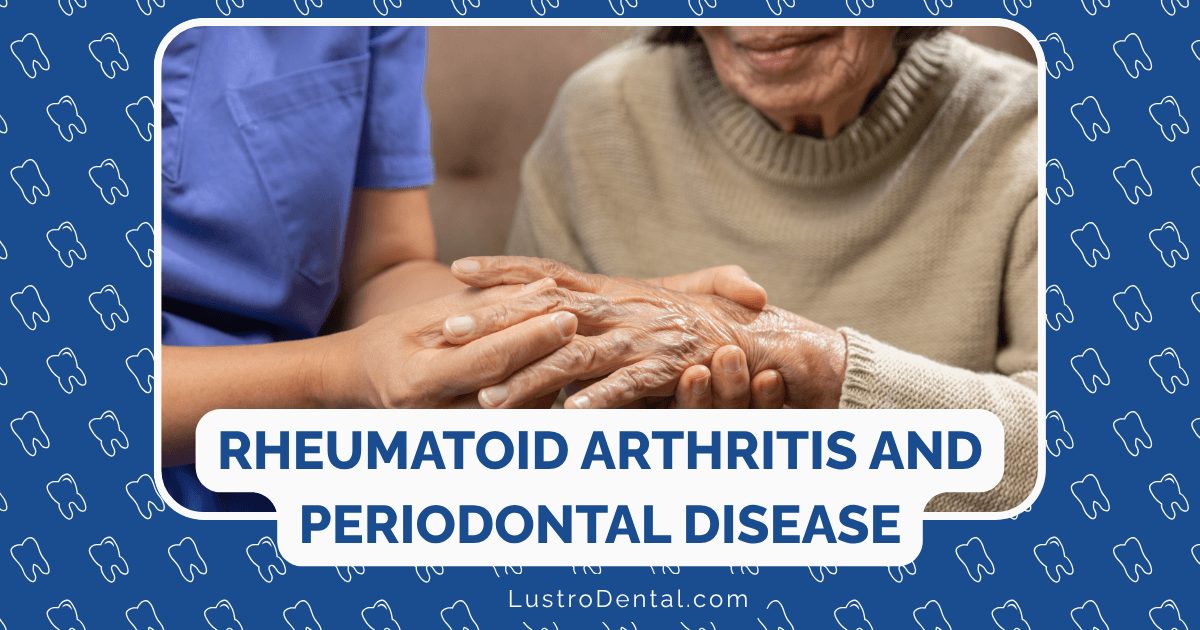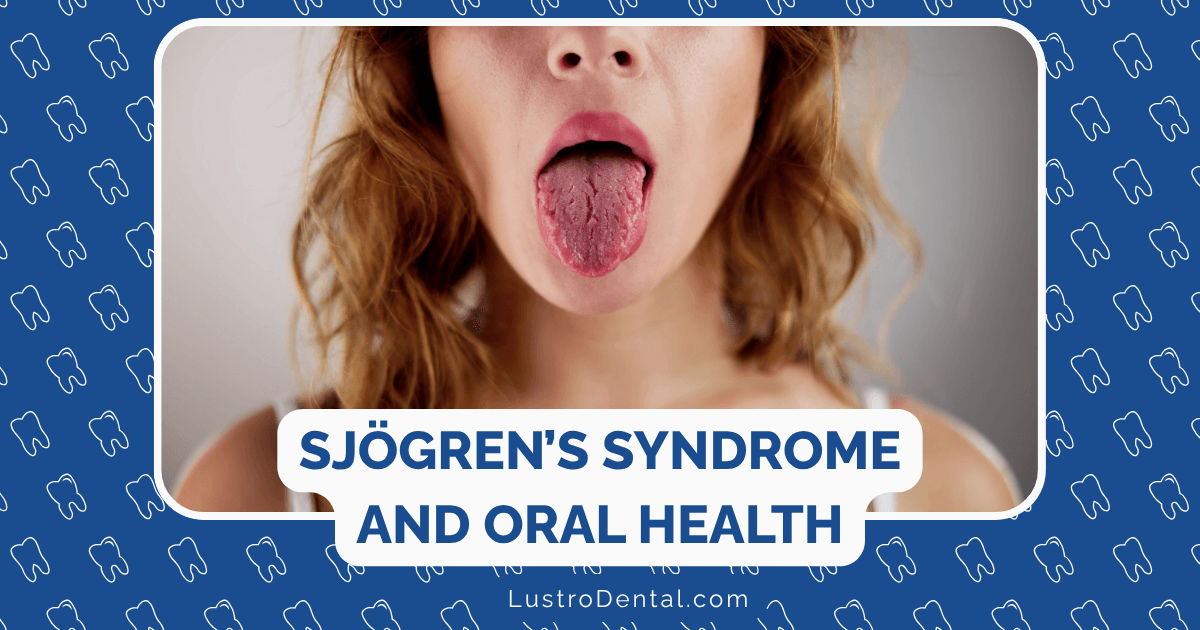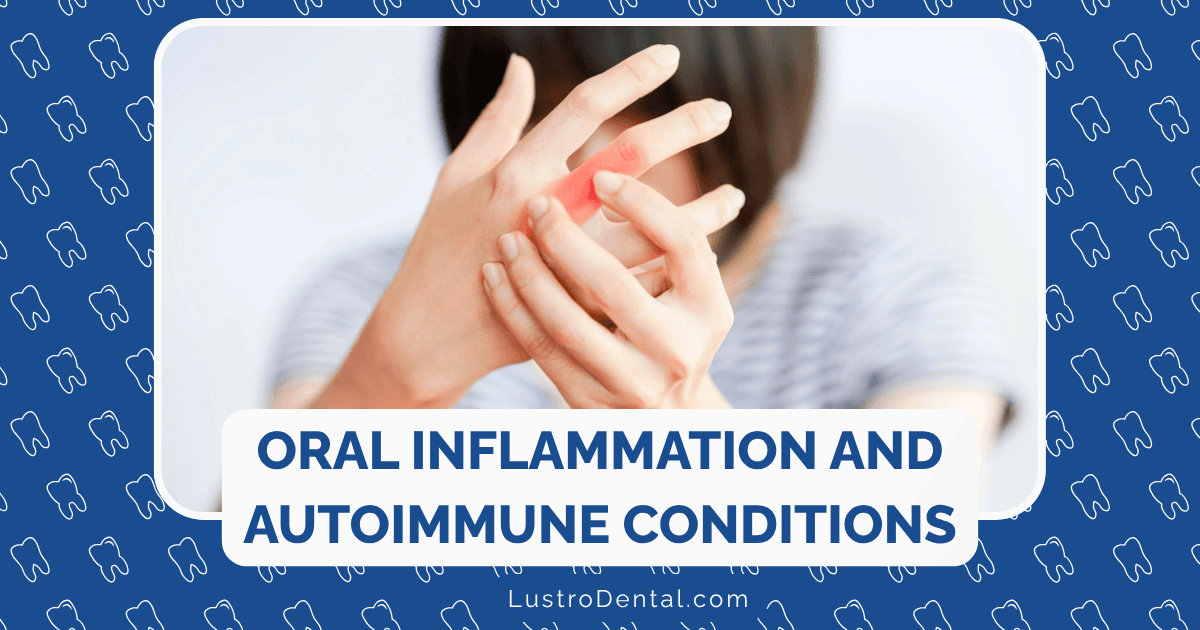Lupus and Oral Manifestations: Recognition and Management
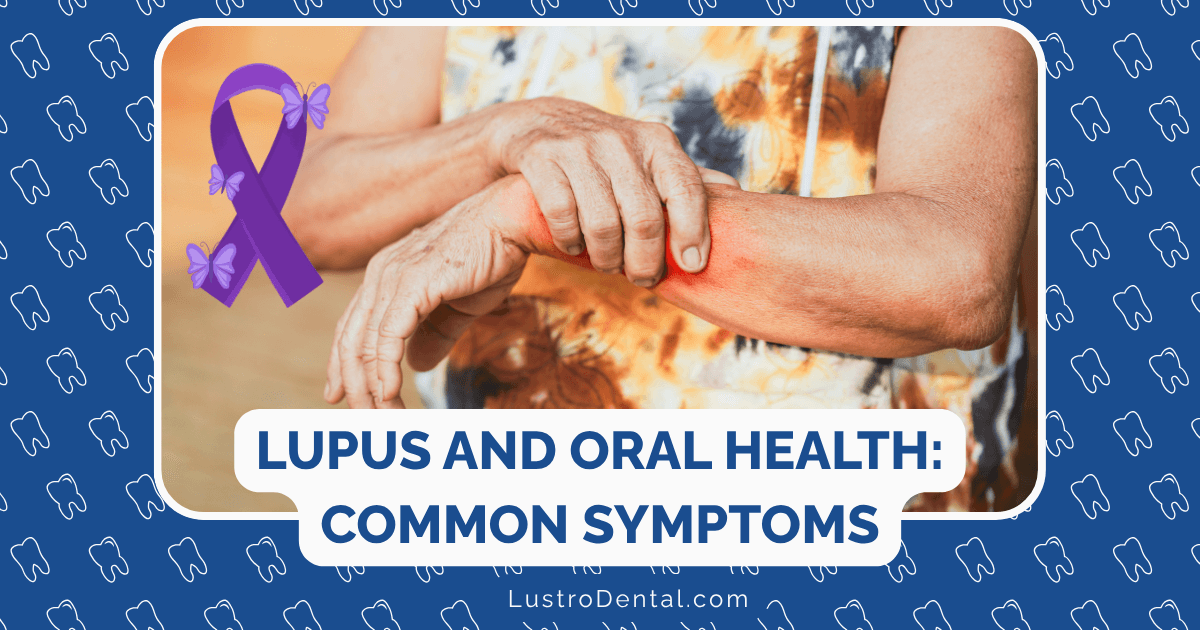
As a dental health advocate who has worked with numerous autoimmune patients throughout my career, I’ve observed that the mouth often serves as a mirror reflecting systemic conditions. This is particularly true for systemic lupus erythematosus (SLE), a complex autoimmune disorder that can manifest throughout the body—including the oral cavity.
Research indicates that up to 75% of lupus patients experience oral manifestations, making the mouth an important diagnostic and monitoring site for this challenging condition. These oral signs not only impact quality of life but may also provide valuable insights into disease activity and progression.
In this comprehensive guide, I’ll explore the various oral manifestations of lupus, their recognition, and evidence-based approaches to management that can significantly improve patient outcomes and quality of life.
Understanding Lupus: A Brief Overview
Before delving into oral manifestations, it’s helpful to understand the fundamental nature of lupus.
What is Systemic Lupus Erythematosus?
Systemic lupus erythematosus (SLE) is a chronic autoimmune disease where the immune system mistakenly attacks healthy tissues throughout the body. This can affect multiple organs, including the skin, joints, kidneys, heart, lungs, blood vessels, and brain.
According to the Lupus Foundation of America, lupus affects approximately 1.5 million Americans, with women of childbearing age being disproportionately affected. The female-to-male ratio is roughly 9:1, and the disease often develops between ages 15 and 44.
Types of Lupus
While SLE is the most common and severe form, other types include:
- Cutaneous lupus: Primarily affects the skin
- Drug-induced lupus: Caused by certain medications
- Neonatal lupus: A rare condition affecting newborns
Each type may present different oral manifestations, though this article will focus primarily on SLE.
Oral Manifestations of Lupus: Recognition and Significance
The oral cavity can display a variety of signs and symptoms in lupus patients. Recognizing these manifestations is crucial for both dental professionals and rheumatologists.
1. Oral Ulcers and Lesions
Oral ulcers are among the most common oral manifestations of lupus, occurring in approximately 40-50% of patients according to Dimensions of Dental Hygiene. These ulcers are so significant that they’re included as the fourth diagnostic criterion for lupus by the American College of Rheumatology.
Types and Characteristics
Lupus-related oral ulcers typically present as:
- Discoid lesions: Raised, white plaques with radiating white striae
- Erythematous lesions: Red patches often on the palate or buccal mucosa
- Aphthous-like ulcers: Painful ulcerations with a red border and yellow or gray center
Dr. Sarah Chen, a rheumatologist specializing in lupus, explains: “Oral ulcers in lupus can be distinguished from common aphthous ulcers by their persistence, recurrence pattern, and often their appearance. They frequently have a characteristic ‘target’ appearance with a red border and white or yellow center.”
Clinical Significance
According to research published in the Journal of Pharmaceutical and Biomedical Sciences, oral ulcers in lupus patients are associated with:
- Pain (average score of 4.5 on a 10-point scale)
- Difficulty eating (average score of 3.8)
- Reduced quality of life (average score of 6.0)
Moreover, the Lupus Foundation of America warns that non-treatment of oral ulcers in lupus patients carries an increased risk for the development of cancer, highlighting the importance of proper recognition and management.
2. Xerostomia (Dry Mouth)
Dry mouth affects approximately 40% of lupus patients and can significantly impact oral health and quality of life.
Causes in Lupus Patients
Xerostomia in lupus may result from:
- Secondary Sjögren’s syndrome: Occurs in 20-30% of lupus patients
- Medication side effects: Particularly from antimalarials and immunosuppressants
- Direct involvement of salivary glands by lupus: Causing inflammation and reduced function
Clinical Implications
The consequences of xerostomia are far-reaching:
- Increased caries risk: Studies show tooth decay in 100% of patients with active lupus and 85% with inactive lupus
- Difficulty speaking and swallowing
- Increased risk of oral infections, particularly candidiasis
- Taste alterations
- Difficulty wearing dentures
Dr. Michael Rodriguez, a dentist with expertise in autoimmune conditions, notes: “Xerostomia in lupus patients creates a perfect storm for dental problems. Without adequate saliva, we lose its protective antimicrobial properties, buffering capacity, and remineralizing effects, leading to rampant decay and other complications.”
3. Periodontal Disease
Lupus patients show a significantly higher prevalence and severity of periodontal disease compared to healthy individuals.
Underlying Mechanisms
The connection between lupus and periodontal disease involves:
- Shared inflammatory pathways: Both conditions involve similar pro-inflammatory cytokines
- Immune dysregulation: Affecting the body’s response to oral bacteria
- Medication effects: Immunosuppressants may alter the oral microbiome
- Practical challenges: Joint pain and fatigue can make oral hygiene difficult
Clinical Presentation
According to Rheumatology Advisor, periodontal disease in lupus patients often presents with:
- More severe attachment loss
- Increased bleeding on probing
- Greater pocket depths
- Accelerated bone loss
4. Temporomandibular Joint (TMJ) Disorders
TMJ involvement is common in lupus, particularly early in the disease course.
Manifestations
TMJ disorders in lupus may present as:
- Joint pain and tenderness
- Limited mouth opening
- Clicking or crepitus
- Facial asymmetry in severe cases
- Jaw claudication: A potentially serious presentation requiring immediate attention
The Lupus Foundation of America notes that TMJ disorders are often found within the first years of lupus disease and tend to become less frequent later.
5. Other Oral Manifestations
Additional oral manifestations may include:
- Mucosal lesions: Affecting 35% of patients
- Angular cheilitis: Painful cracks at the corners of the mouth
- Hyperpigmentation: Dark patches on the oral mucosa
- Glossodynia: Burning sensation of the tongue
- Dysgeusia: Taste alterations
Dental Management Considerations for Lupus Patients
Managing oral health in lupus patients requires a thoughtful, comprehensive approach that considers both the direct oral manifestations and the broader systemic implications of the disease.
1. Collaborative Care
A multidisciplinary approach is essential for optimal outcomes.
Key Collaborators
- Rheumatologist: To provide insights on disease activity and medication considerations
- Dentist and dental hygienist: For regular monitoring and treatment of oral manifestations
- Primary care physician: To coordinate overall health management
- Mental health professional: To address psychological aspects of chronic disease
Dr. Jennifer Lee, a periodontist with experience treating lupus patients, emphasizes: “Communication between the dental team and the rheumatologist is absolutely critical. Understanding the patient’s current disease status, medication regimen, and any organ involvement helps us tailor our approach to ensure safety and efficacy.”
2. Medication Considerations
Lupus medications can significantly impact dental care decisions.
Common Medications and Dental Implications
| Medication Class | Examples | Dental Considerations |
| Antimalarials | Hydroxychloroquine | May cause oral pigmentation, lichenoid reactions |
| Corticosteroids | Prednisone | Increased infection risk, delayed healing, potential adrenal suppression |
| Immunosuppressants | Methotrexate, Azathioprine | Increased infection risk, potential for oral ulceration (especially methotrexate) |
| Biologics | Belimumab | Increased infection risk, potential delayed healing |
| NSAIDs | Ibuprofen, Naproxen | Potential interaction with anticoagulants, risk of GI bleeding |
Antibiotic Prophylaxis
According to College of Dental Hygienists of Ontario, antibiotic prophylaxis is not typically indicated for infective endocarditis in patients with SLE-associated valvular disease undergoing invasive dental procedures. However, individual assessment is necessary, particularly for patients with:
- Artificial heart valves
- Previous infective endocarditis
- Certain congenital heart conditions
- Cardiac transplant with valve abnormalities
3. Managing Oral Ulcers and Lesions
Effective management of oral ulcers can significantly improve quality of life.
Treatment Approaches
- Topical corticosteroids: Such as triamcinolone acetonide 0.1% in dental paste or dexamethasone elixir as a rinse
- Intralesional corticosteroid injections: For persistent, isolated lesions
- Antimicrobial mouth rinses: To prevent secondary infection
- Topical anesthetics: For pain management (lidocaine viscous 2%)
- Systemic medications: For severe, refractory cases, coordinated with the rheumatologist
According to Hospital for Special Surgery, antimalarial drugs may be necessary for resistant lesions, highlighting the importance of coordinated care.
Diagnostic Considerations
Dimensions of Dental Hygiene emphasizes that oral lesions in lupus patients may require biopsy for definitive diagnosis, as they can mimic other conditions such as lichen planus, erythema multiforme, or oral cancer.
4. Addressing Xerostomia
Managing dry mouth is crucial for preventing complications and improving comfort.
Strategies for Xerostomia Management
- Saliva substitutes: Carboxymethylcellulose or hydroxyethylcellulose-based products
- Salivary stimulants: Sugar-free gum or lozenges containing xylitol
- Prescription medications: Pilocarpine or cevimeline (when appropriate)
- Hydration: Regular water consumption and humidification of sleeping environment
- Avoidance of irritants: Alcohol, tobacco, caffeine, and spicy foods
- Nighttime considerations: Application of lip balm and use of a humidifier
Preventive Protocols
For patients with xerostomia, aggressive preventive measures are essential:
- High-concentration fluoride products: Prescription 5000 ppm fluoride toothpaste
- In-office fluoride treatments: Every 3-4 months
- Calcium and phosphate products: To enhance remineralization
- Antimicrobial mouth rinses: To control oral bacteria
- More frequent recall intervals: Every 3 months rather than the standard 6 months
5. Periodontal Management
Controlling periodontal inflammation is particularly important in lupus patients.
Treatment Considerations
- Non-surgical therapy: Scaling and root planing with careful consideration of bleeding risk
- Adjunctive antimicrobials: Local or systemic when indicated
- Maintenance therapy: More frequent recall intervals (3 months)
- Oral hygiene instruction: Adapted to patient’s physical limitations
- Adaptive devices: Electric toothbrushes, floss holders, or water flossers for patients with joint involvement
Potential Benefits Beyond Oral Health
Interestingly, research suggests that periodontal treatment may have positive effects on systemic lupus activity. A study cited by Rheumatology Advisor found improvements in disease activity scores following periodontal therapy, suggesting a bidirectional relationship between oral and systemic inflammation.
6. Special Considerations for Dental Procedures
Several unique considerations apply when providing dental care to lupus patients.
Environmental Modifications
- UV-blocking filters: To minimize exposure to fluorescent lighting, which can trigger flares
- Stress reduction protocols: To prevent disease exacerbation
- Appointment timing: Shorter morning appointments when fatigue is typically less severe
- Positioning considerations: To accommodate joint pain or mobility limitations
Procedural Adaptations
- Careful soft tissue management: To minimize trauma and promote healing
- Consideration of alternative materials: For patients with metal sensitivities
- Modified anesthetic protocols: Based on organ involvement and medication interactions
- Conservative treatment planning: Balancing ideal treatment with patient tolerance
Dr. Rodriguez advises: “For lupus patients undergoing extensive dental work, we often break treatment into shorter appointments, use the most biocompatible materials available, and implement additional infection control measures given their immunocompromised status.”
Patient Education and Self-Care Strategies
Empowering lupus patients with knowledge and tools for self-care is essential for long-term oral health.
Daily Oral Hygiene Recommendations
- Brushing: Twice daily with a soft-bristled toothbrush and fluoride toothpaste
- Interdental cleaning: Daily flossing or use of interdental brushes
- Tongue cleaning: To reduce oral bacteria and improve taste
- Rinses: Alcohol-free antimicrobial or fluoride rinses as prescribed
- Adaptive techniques: For patients with joint pain or limited dexterity
Dietary and Lifestyle Guidance
- Avoiding irritating foods: Spicy, acidic, or rough-textured foods that may exacerbate oral lesions
- Limiting sugar: Particularly important given the increased caries risk
- Hydration: Regular water consumption throughout the day
- Avoiding tobacco and alcohol: Which can worsen oral manifestations
- Stress management: As stress can trigger disease flares
When to Seek Dental Care
Patients should be educated about warning signs requiring prompt dental attention:
- New or worsening oral ulcers
- Sudden changes in salivary flow
- Signs of infection: Swelling, increased pain, purulent discharge
- Changes in taste or sensation
- Difficulty opening the mouth or jaw pain
Future Directions in Research and Treatment
The field continues to evolve, with several promising areas of research:
Emerging Therapies
- Novel biologics: Targeting specific inflammatory pathways relevant to both lupus and oral manifestations
- Advanced saliva substitutes: With enhanced properties mimicking natural saliva
- Localized drug delivery systems: For treating oral lesions with minimal systemic effects
- Regenerative approaches: For periodontal and TMJ rehabilitation
Diagnostic Advances
- Salivary diagnostics: Using saliva to monitor lupus disease activity
- Advanced imaging: For earlier detection of TMJ involvement
- Biomarker identification: To predict oral manifestations and guide treatment
Conclusion: A Comprehensive Approach to Oral Health in Lupus
The oral manifestations of lupus represent more than just dental concerns—they reflect the systemic nature of this complex autoimmune disease and significantly impact quality of life. By recognizing these manifestations early and implementing appropriate management strategies, dental professionals can play a crucial role in the multidisciplinary care of lupus patients.
For dental providers, understanding the unique challenges faced by lupus patients allows for more tailored, effective care. For patients, knowledge about potential oral manifestations and proactive management strategies can lead to improved comfort, function, and overall wellbeing.
The mouth-body connection is particularly evident in lupus, reminding us that comprehensive healthcare requires looking beyond traditional boundaries between medical specialties. Through collaborative care, evidence-based treatment approaches, and patient empowerment, we can significantly improve outcomes for individuals living with this challenging condition.
Have you experienced oral manifestations related to lupus or another autoimmune condition? What strategies have helped you manage these symptoms? Share your experiences in the comments below.


